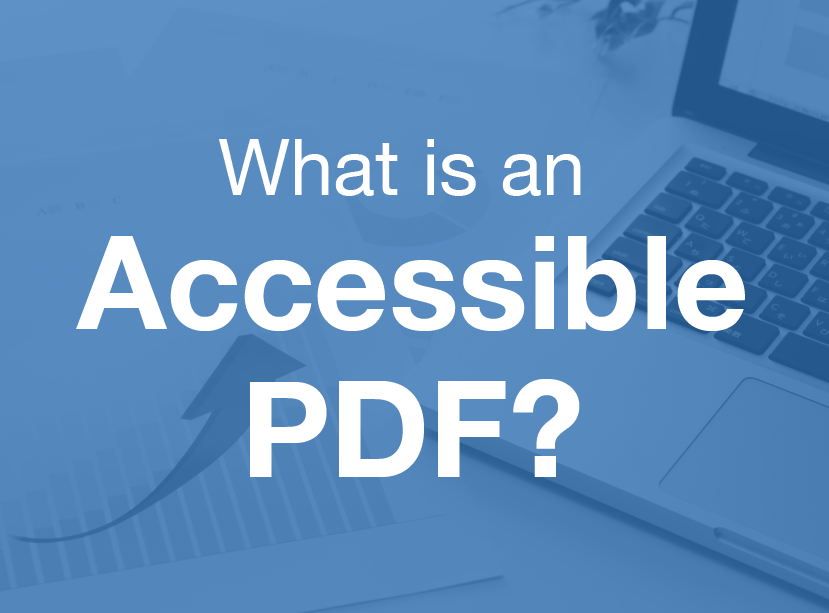What is Web Accessibility?
- December 22, 2017
- / Adot Labs
- / learningcenter

“The one argument for accessibility that doesn’t get made nearly often enough is how extraordinarily better it makes some people’s lives. How many opportunities do we have to dramatically improve people’s lives just by doing our job a little better?” ― Steve Krug, Author, UX Professional
Humanity steadily strives to improve its daily quality of life. As a society, we have gone from the horse and carriage to self-driving vehicles. We have stopped merely dreaming about the heavens to exploring other planets. In the last 100 hundred years alone, people have gone from only having the capability to write down their tales/adventures to seeing some of our now deceased entertainers performing on stage via holograph. Never could we have imagined how far and fast technology would advance. In that advancement, products and services followed the dollar signs and catered to the masses, often only considering anyone with a disability after the fact.
It was due to this formerly commonplace practice that Accessibility compliance laws were put into place.
History of ADA
In 1990, the Americans With Disabilities Act (ADA) was passed by Congress. It would be the first law in US history that addressed the civil rights of peoples with disabilities; prohibiting discrimination in employment, public services, public accommodations, and telecommunications. In short, ADA was drafted as the “equal opportunity” law for the disabled.
The ADA was modeled after both the 1964 Civil Rights Act (prohibits discrimination based on race, color, religion, sex, or National Origin) and Section 504 of the Rehabilitation act of 1973 (prohibits discrimination against people with disabilities in programs that receive federal aid).
Who does the ADA Cover?
To have protection covered by the ADA, a person must have a disability (or relationship with an individual with a disability) that the law defines as a physical or mental impairment that substantially restricts one or more major life activities, a person who has a history or record of such an impairment, or a person who is perceived by others as having such a disability. The ADA does not specifically name all the impairments that are covered. (for more info see: https://www.ada.gov/cguide.htm#anchor62335)
Current Accessibility Concerns and Why
As more services and products have been moved to a digital format, the need to ensure that everyone can access them has increased. In the words of one of the most notable modern musicians in US history, who is also disabled, Stevie Wonder “We need to make every single thing accessible to every single person with a disability.”
Per Tim Berners-Lee (inventor of the world wide web), “The web is fundamentally designed to work for all people, whatever their hardware, software, language, culture, location, or physical or mental ability.”
Sometimes, websites fail to meet this goal, causing, even more, barriers to communication and interaction that many disabled people face navigating in the physical world.
In 2016, the United Nations Convention on the Rights of Persons with Disabilities declared that access to information and communications technologies, including the world wide web, is a basic human right. When a company’s digital real estate—their website—fails to meet accessibility standards (as currently determined by W3C’s Web Content Accessibility Guidelines (WCAG)), that company is, in essence, infringing on the basic human rights of the disabled. (See precedent case: Gil vs. Winn-Dixie Stores)
Title III of the ADA
This perceived infringement has spurred an increase in Title III ADA lawsuits. Title III of the ADA refers to public accommodations. It guarantees that individuals with disabilities are offered the full and equal enjoyment of the “goods, services, facilities, privileges, advantages, or accommodations” offered by a place of public accommodation. As the internet is a place where goods, services, and information are exchanged, the law has been interpreted to include it under Title III.
In the last 2 years, there have been thousands of ADA lawsuits. Of those, there are 751 federally filed as of August 15, 2017. Of that 751, there are 61 cases which have been heard on the federal level, all alleging that the defendant’s website has violated Title III of the ADA.
Future of Accessibility Website Lawsuits
At the time of this article, website accessibility lawsuits show no signs of declining. In fact, statistics show quite the opposite. This could be due, in part, to the Department of Justice’s July 2017 placement of website regulations /rulemaking on an “Inactive list.” This means that there will continue to not be any federal regulations about public accommodations or state and local government websites for the foreseeable future.
What Business’ Can Do
ADA access lawsuits are currently costing businesses between $10,000-$100,000+. By comparison, the cost of compliance is minuscule. If a company has not yet been sued, they can avoid an unnecessary and costly expense by taking immediate action while simultaneously providing equal access to their goods, service, or information.
It is in the best interest for businesses as well as humanity to be inclusive of all possible audiences. To quote the Guinness World Record holder for longest non-stop wheelie in a wheelchair, Robert M. Hensel, who has spina bifida, “there is no greater disability in society, than the inability to see a person as more.” See more than a disability and contact an accessibility representative today.
 ADA Lawsuits Target Non-Compliant Websites (2:45)
ADA Lawsuits Target Non-Compliant Websites (2:45)
 Winn Dixie Loses ADA Website Lawsuit (3:33)
Winn Dixie Loses ADA Website Lawsuit (3:33)
 How Does it Work?
How Does it Work?
 Adot Labs Introduces Adot Pro as an Affordable and Quick Solution for Web Accessibility
Adot Labs Introduces Adot Pro as an Affordable and Quick Solution for Web Accessibility
 What is an Accessible PDF?
What is an Accessible PDF?
 Adot Pro is featured at the 2017 FRLA Conference in Orlando
Adot Pro is featured at the 2017 FRLA Conference in Orlando
 Adot Labs Partners with the Florida Restaurant and Lodging Association
Adot Labs Partners with the Florida Restaurant and Lodging Association
 Content Developers: You're Forgetting a Key Audience that Matters
Content Developers: You're Forgetting a Key Audience that Matters
 Why Your Business Needs an Accessibility Plan
Why Your Business Needs an Accessibility Plan
 Web Accessible Images: Where to Start
Web Accessible Images: Where to Start